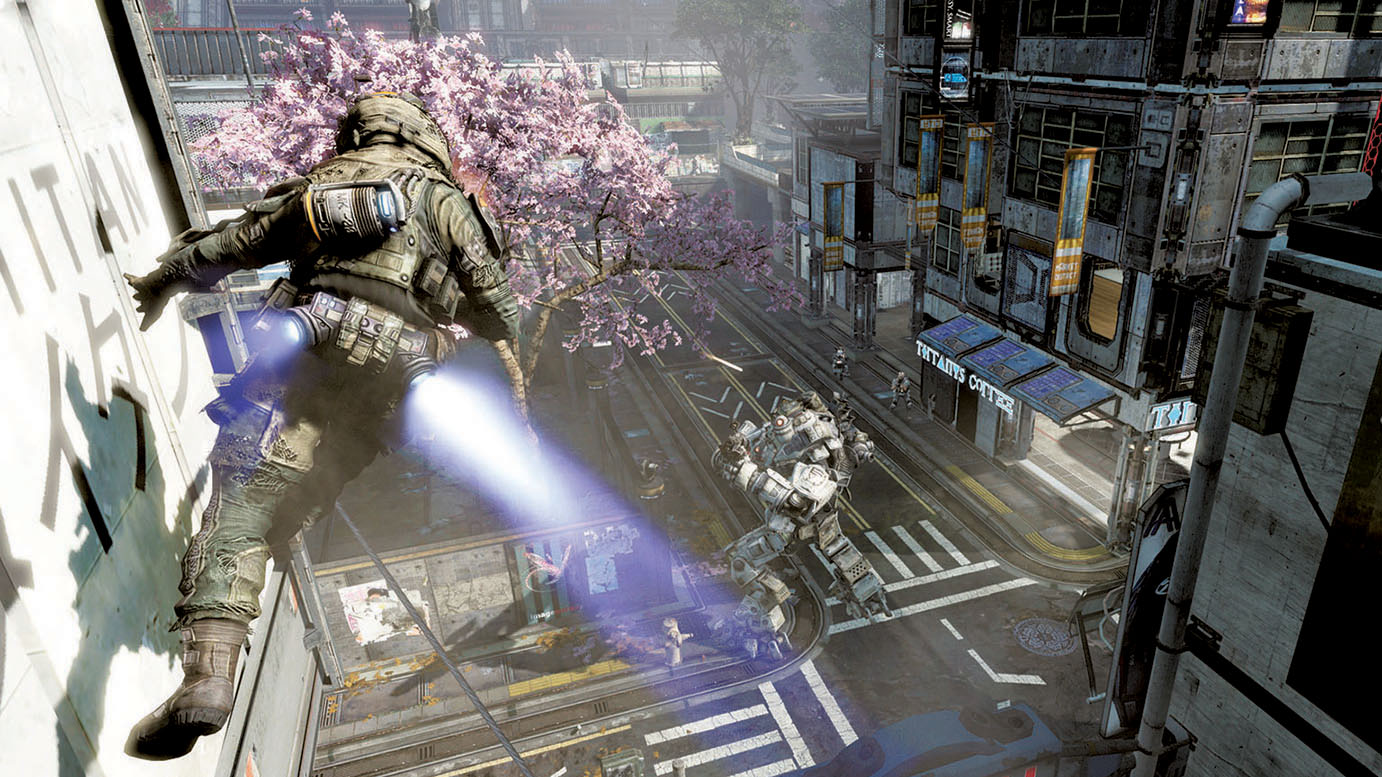Why would you want to shoot things when it's more fun to run away from them?
The best moment of Raiders of the Lost Ark is the rolling boulder scene. That perfect pacing, the sudden escape ratcheted up to drumming heart fervour in its final moments, a near miss, the comic touch of rescuing the whip. The best moment of a losing match of Titanfall’s Attrition mode is the escape to the evac point. The sudden need to bolt amplified by the appearance of someone with a crappy Gamertag rounding a corner in their walking robo-cocoon, the near-miss of a railgun slug, the comic touch of your future-plane being blasted into molten, bloody slag seconds before take-off.

Neither scene has any of the assassin-shooting, grunt-stomping protagonist violence you’ll come expect from the rest of each respective piece, yet this is about as thrilling as either gets, proper heart-in-mouth, heart-out-of-mouth, oh-god-I’ve-barfed-my-heart-out-in-excitement action. It speaks to a peculiar part of our brains – escapism’s a word you hear a lot when it comes to games, but recently we’ve started to think that they’re rarely as good as when they’re taking that word completely literally.
Look at Alien: Isolation. That effervescent emotional mixture of not knowing where the Xenomorph might be, having the tools to find out but just not wanting to know – followed by desperate hiding sequences, mad dashes for a new, safer space or acid-flecked death – is a powerful thing. Far more powerful, it seems, than turning round with a gun and instantly reducing the thing to extra-terrestrial casserole meat.

We’ve seen this before, of course. Mirror’s Edge let players move around its world in ways they never had before, making escape from its guards both more viable and more fun than attacking them, and it looks set to do so again in the sequel. It’s no surprise that forced combat sections came away feeling like misguided bobbins – they were contradictions, you couldn’t help but feel they’d been jammed in there by some gonk in a suit terrified of releasing a first-person game that shunned murder for that core, that literal escapist attitude.
That’s an attitude I think we will – or perhaps should – begin to see proliferate on Xbox One. Where escape sequences have traditionally been among games’ dullest moments, requiring little more than QTE prompts or an analogue stick jammed upwards, the opportunities offered by bolstered tech could see these moments become more dynamic.
Titanfall’s gentle parkour was the first logical step – make traversal freeing and fun, and people will want to use it as much for pleasure as for the tactical upper hand. Alien takes it to its next extreme – don’t just make flight fun, make it essential. Xbox One’s hefty gubbins allow for so much more play with the dynamics of light, sound, memory space and artificial intelligence than devs have had access to before. You’re not playing with a rolling boulder stand-in in a corridor anymore, you’re acting out dynamic cat and mouse chases that require clever, intricate movement, non-violent tools and an adrenaline gland equipped to deal with multiple bursts of high-power heebie-jeebies.
Sign up to the GamesRadar+ Newsletter
Weekly digests, tales from the communities you love, and more

In a way, it offers the option for more power to the player, despite their vulnerability. In a shooter, you rely on your guns, your ammo, and whatever perks you might have equipped. In a well-created ‘run-away-‘em-up’, your own ability to discern where a noise came from, how a light moved or where you need to be next are tools you bring yourself. The opportunities are there, the consequences could be thrilling – we just need to, ironically, stop running away from them.
Click here for more excellent Official Xbox Magazine articles. Or maybe you want to take advantage of some great offers on magazine subscriptions? You can find them here.



